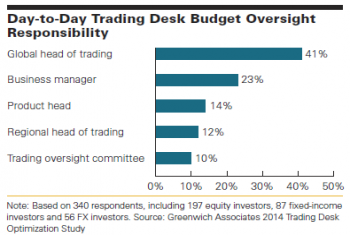U.S. Equity Derivatives: Electronic Trading a Tough Sell
While U.S. equity derivatives clients direct more flow electronically, the market lags the broader derivatives market.
While U.S. equity derivatives clients direct more flow electronically, the market lags the broader derivatives market.
Trade finance activity is on the rise among companies around the world, driven by the expansion of European and U.S. firms into international markets and the continued surge in trading among companies within the broad Asian...

Over the last decade the buy side has expanded the role and capabilities of their trading desks by making significant investments in technology and staff—a challenging trend to continue when budgets are tight.
Treasury departments at large U.S. companies rank IT security as their top priority for 2015.
Trade finance activity is on the rise globally but reveals a variety of growth strategies for companies in different parts of the world.
-
U.S. small businesses and mid-sized companies are cutting ties with existing banks for new providers offering better pricing, capabilities and service.
By outsourcing technology, buy-side firms can save money better spent to lower fees, lower risk and increase alpha.
As S&T revenues decline across the board, primary issuance has become the profit and value-add center for bulge-bracket firms.
While the high level of e-trading is no shock to mortgage traders, the electronification of the mortgage-backed securities (MBS) market has been overshadowed by changes in other cash and derivatives markets.
Access timely info via personalized dashboard
Receive webinar invitations and set up your preference
Save Coalition Greenwich Research in a personal folder